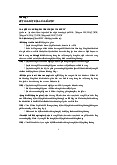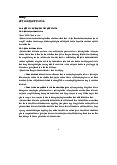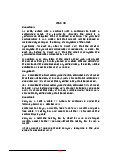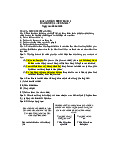




Preview text:
IAS 02 ( INVENTORIES)
Definition ( định nghĩa ) :
bao gồm assets, held for sale , materials and supplies , production process for sale
( trong sx quá trình vì doanh thu)
exclude : Biological assets related to agriculture, financial instruments, work in proccess
arising under construction contracts
Chi phí ( cost ) gồm :
Cost of purchase:= Purchase price + Import duties and other taxes + Transport,
handling and other directly attributable costs to the acquisition - Trade discount - Rebates
Cost of conversion ( chi phí chuy n đ ể i ) ổ o
Direct costs ( chi phí trực tiếp ) = direct material + direct labour o
Indirect costs (Fixed manufacturing overheads + variable manufacturing overheads)
Inventory cost should not include: Abnormal waste, Storage costs,
Administrative overheads unrelated to production, Selling costs, Foreign exchange
differences arising directly, Interest cost when inventories are purchased with deferred settlement terms
Beginning inventory + Purchases = Goods available for sale – COGS = Ending inventory
NRV= Estimated selling price – estimated costs
Carrying amount = fair value - costs to sell IAS16
Definition : are physical assets or property owned by a company, and Be used for
producing their product and service, For rental to others, For administrative purposes, Be
used more than one reporting period
IAS 16 is not allowed : Biological assets related to agricultural activity, Asset held for
sale (Tài sản nắm giữ để bán), Investment Property (BĐS đầu tư), Non-renewal natural resource rights and reserves
Items of property, plant, and equipment should be recognized as assets when it is probable that: [IAS 16.7] •
it is probable that the future economic benefits associated with the asset will flow to the entity, and •
the cost of the asset can be measured reliably.
An item of property, plant and equipment should initially be recorded at cost ( giá gốc ).
Cost includes all costs necessary to bring the asset to working condition for its intended
use ( đưa tài sản vào trạng thái có thể sử dụng )
PPE = Purchase price + (import duties + non-refundable taxes) – (Trade
discounts + Rebates) + Directly attributable costs - Interest of deferred
paymentn+ Borrowing costs (IAS 23 ) + Initial estimate of the costs of
dismantling and removing the item and restoring the site on which it is located Costs of employee Professional benefits Costs of site fees preparation ( phí chuyến môn) Directly attributable costs Initial transportation, Cost of testing loading and Installation and ( chi phí th ử unloading expense nghi m ệ ) assembly costs ( chi ( chi phí v n ậ
phí lắếp ráp, lắếp đ t ặ ) chuy n, ể bóc xếếp)
Costs that are not recognized as costs of an item of PPE ( KHÔNG ĐƯỢC GHI NHẬN
Costs of opening a new facility
Costs of introducing a new product or service (including costs of advertising and promotional activities)
Costs of conducting business in a new location or with a new class of customers
(including costs of staff training)
Administration and other general overhead costs
Operating losses before commercial production
Carrying amount = Cost of asset – Accumulated depreciation – Impairment Expense
The change of cash flows is identified through a crucial change in these three
factors, including Risk, Timing and Amount
The depreciable amount = cost -residual value
Straight-Line Depreciation Method
Depreciation expenses = (Asset cost-Estimated salvage value)/(Number
of accounting periods for estimated useful life)
Units-of-Production Method
Depreciation per unit = (Asset cost – Estimated salvage value) /
Estimated total units of production during useful life of asset
Depreciation per period = Depreciation per unit x Number of units of goods produced
Revaluation value = Fair value – Depreciation and impairment
- If an item of PPE is revalued, all items of the same class also get revalued
Disclosure requirements for revalued assets Date of revaluation
Whether independent valuer was used
Methods and significant assumptions applied in estimating fair values
Extent to which fair values were determined directly or estimated
Carrying amount of each class of revalued PPE as under the cost model
Revaluation surplus, including movement and any restrictions of distribution of balance to shareholders IAS38
Intangible Asset định nghĩa
An identifiable non-monetary asset without physical substance
Critical attributes of an intangible asset: Identifiability Control
Future economic benefits : revenue from the sale of products or services, cost savings,
other benefits resulting from the use of the asset
An asset is identifiable ( có th đ ể c xác đ ượ nh ) ị if it either o
is separable, ie is capable of being separated or divided from the entity
and sold, transferred, licensed, rented or exchanged o
arises from contractual or other legal rights
Note: Goodwill recognized in a business combination is an intangible asset, but it
is not individually identified
An intangible asset shall be recognized if, and only if
The definition of an intangible asset
it is probable that the expected future economic benefits
the cost of the asset can be measured reliably
An intangible asset shall be measured initially at cost ( giá gốốc )
intangible asset comprises = Purchase Price + (Import duties + Non-refundable Taxes)
- (Trade discounts + Rebates) + directly attributable cost ( Costs of employee benefits,
Professional fees, Costs of testing) E.g
: Franchises, patents, customer lists and trademarks Not include:
Costs of introducing a new product or service (including costs of
advertising and promotional activities);
Costs of conducting business in a new location or with a new class of
customers (including costs of staff training) Administr
ation and other general overhead costs
Goodwill = Consideration transferred + Amount of non-controlling
interests + Fair value of previous equity interests - Net assets recognised
◦ In some cases, an intangible asset may be acquired free of charge, or for nominal
consideration, by way of a government grant, such as airport landing rights, import licenses or quotas
◦ The cost of an internally generated intangible asset comprises all directly
attributable costs necessary to create, produce, and prepare the asset to be
capable of operating in the manner intended by management Cost model
Carrying amount = cost – accumulated amortization – accumulated impairment losses Revaluation model
Carrying amount = Revalued Amount
(It means: Fair value of revaluation date




